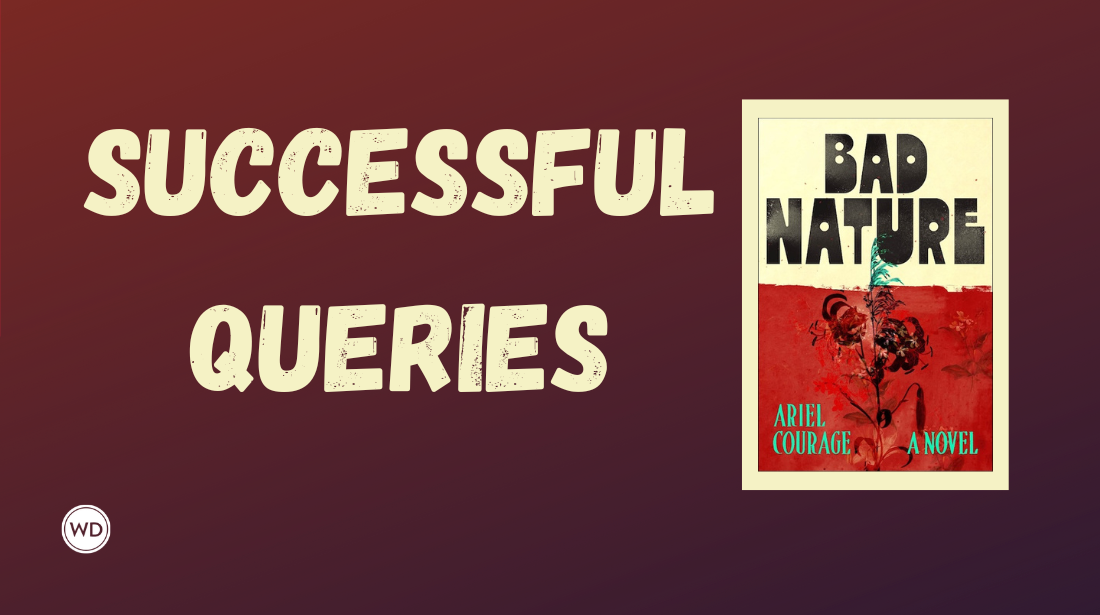4 Truths That Will Revolutionize Your Revision Process
Perhaps because I’m in the process of revising a novel manuscript myself, the advice in the May/June 2013 Writer’s Digest Guide to Pain-Free Revision really resonated with me as I…
Perhaps because I’m in the process of revising a novel manuscript myself, the advice in the May/June 2013 Writer’s Digest Guide to Pain-Free Revision really resonated with me as I pieced it all together behind the scenes. In fact, I’d go so far to say that some of the insights from the talented contributors we had the privilege of featuring in this issue have changed the way I think about revision.
Here are a few of my personal light-bulb moments from its pages:
1. The proof of your prose lies with the reader.
This tip comes from the incomparable novelist and writing instructor David Corbett. Because he’s, well, incomparable, I’ll quote directly from his thoughtful article here:
In Alphabet Juice, Roy Blount Jr.’s earthy, contrarian screed to the pleasures of language, he traces to Sir Arthur Quiller-Couch the now immortal edict of revision: Murder your darlings.
It’s interesting that this advice, so often attributed to one great writer or another—Twain, Faulkner, Hemingway, Orwell, Auden, even Samuel Johnson—was in fact penned by a relative obscurity who’d be lost to posterity were it not for that one fierce, scolding admonition.
And yet, as Blount points out, the phrase “Murder your darlings” is itself, well, a darling. There are many less flashy ways Quiller-Couch could have issued his diktat: “Eliminate all words or phrases, no matter how pleasing, that draw undue attention to themselves (or the writer) at the expense of the narrative flow.”
But who would remember that?
Writing is rewriting, another pithy bon mot (per Eudora Welty), and one that shies away from the homicidal imagery. After all, you’re not out to flog your manuscript—or yourself—into a state of self-abnegation. You’re hoping to create an impression in the reader’s mind, one that forms clearly and flows naturally. You’re hoping for immediate comprehension and yet also a force of impact, a depth of meaning, or an aptness of expression that causes what’s been read to linger. You’re hoping to make the reader happy.
Notice that each one of those goals involves someone else: the reader. One of my favorite aunts used to say: “You don’t know yourself by yourself.” The writer’s corollary to this might be: The proof of your prose lies with the reader, not the writer.
(Read Corbett’s full May/June 2013 Writer’s Digest article “Clearing Out the Clutter,” and I think you’ll agree that his thoughtful approach to such an evergreen topic is a breath of fresh air.)
2. Tinkering is not revising.
Read that again. This innocuous-sounding tidbit comes from freelance editor and novelist Tanya Egan Gibson, and I think it’s something we all need to be reminded of on a regular basis. I've found that often when I’m revising a piece—whether it’s a novel chapter or a magazine article—and just can’t seem to get it right, the key is to open up a blank document and re-vision it anew. At first, it might seem like more work to start fresh, so I think we all have a tendency to resist the need to do this—but I’ve found that when I stop tinkering with something that isn’t working and try another approach instead, it almost always leads to a speedier solution. (Gibson’s full May/June 2013 Writer’s Digest article “10 Things Your Freelance Editor Might Not Tell You—But Should” is filled with general wisdom that applies regardless of whether you’re working with an editor or critique partners, or revising on your own.)
3. Dialogue can almost always be more compressed, more driven by conflict, and more unique to the person speaking.
No roundup of revision tips would be complete without an appearance from revision guru James Scott Bell (author of writing pantry staple Revision & Self-Editing, recently revised and reissued from Writer’s Digest Books). Here’s a bit from his May/June 2013 Writer’s Digest article “The 5 Biggest Fiction Writing Mistakes + How to Fix Them” that I’ve applied successfully to my own work almost daily since first reading it:
Try this: Copy a lengthy dialogue exchange into a fresh document. Then cut and compress as much as you can. Compare it to the original. Nine times out of 10 you’ll prefer all or part of the new version.
Here’s an example from Bell:
“Mary, are you angry with me?” John asked.
“You’re damn straight I’m mad at you,” Mary said.
“But why? You’ve got absolutely no reason to be!”
“Oh but I do, I do. And you can see it in my face, can’t you?”
The alternative:
“You angry with me?” John asked.
“Damn straight,” Mary said.
“You got no reason to be!”
Mary felt her hands curling into fists.
Try it. It works.
4. The most successful writers “pressure test” their work (before submitting).
This one was written with freelance writers in mind, though the advice can certainly be adapted to any kind of writing you do. In my experience as a magazine editor, though, I can honestly say I wish every writer would take this suggestion from veteran freelancer Roger Morris to heart:
Aggressively challenge your work before presenting it your boss (the editor). Pressure testing isn’t perfect, but the more flaws you can eliminate before sending an article to your boss—the editor—the less likely you will get it back for revisions. And that makes for a more efficient, satisfying and profitable career in freelance writing. Here are 3 ways to do it:
• Keep asking yourself: What am I missing?Editors expect a story to be complete—that is, to not leave the readers with unanswered questions. If it’s not, expect a note about holes that need to be filled.
• Challenge your own points with this: So what?A lode of information is good, but being relevant is better. Constantly ask yourself the implications of details you present in an article—and then present those, too.
• Back it up. An article that presents a lot of good points but is not fleshed out with examples, statistics and quotes from experts to validate those points is asking to be rewritten. But it’s also true that an editor is more likely to overlook some flaws—or even be unaware of them—if you are constantly feeding her (and thus the ultimate reader) a heady diet of interesting information.
In his complete article “The Freelance Writer’s Guide to Avoiding Revisions & Rewrites,” Morris offers up 10 generous tips for pressure-testing your own work before you submit, and goes into helpful detail about each one. If you freelance, this article alone is worth the price of the issue, in my humble opinion.
5. Insert your best revision tip here.
What works well for you when it comes time to revise, and what approaches have you learned to avoid? What are your own favorite revision tips and strategies? Leave a comment below, and keep the discussion going!
Whether you’re revising a project now or will be in the near future (won’t we all?), I wholeheartedly endorse the full issue as a must-have reference. Find it on newsstands now, or order or download the May/June 2013 Writer's Digest through the Writer’s Digest Shop right now.
Jessica Strawser
Editor, Writer’s Digest Magazine
Follow me on Twitter @jessicastrawser
Like what you read from WD online? Subscribe today, so you’ll never miss an issue in print! Or, have our specially formatted digital issues delivered directly to your inbox, or to your Amazon Kindle.
Jessica Strawser is editor-at-large for Writer's Digest and former editor-in-chief. She's also the author of several novels, including Not That I Could Tell and Almost Missed You.








